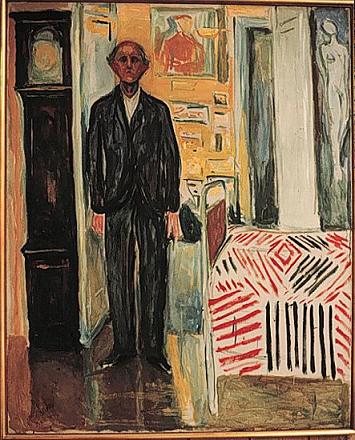
LIFE AS MYTH
![]()
JOURNAL
![]()
JOURNAL 2008
![]()
Impressions at sunrise
Finding the inner muse
![]()
AUTUMN 2008
Portraits of self
![]()
LIFEWORKS
![]()
ATLAS
![]()

AUTUMN 2008
EDVARD MUNCH 1942
Sickness, insanity and death were the angels that surrounded my cradle and they have followed me throughout my life.
Edvard Munch (1863-1944), Symbolist painter and printmakerEdvard Munch was the second of five children born to Christian and Laura Cathrine Munch. Munch's mother died of tuberculosis in 1868 and his favorite sister, Johanne Sophie, also died from the disease in 1877. After his mother's death, Christian raised the children in an atmosphere of religious fear, frequently instructing them that if they sinned in any way, they would go to hell without hope of pardon. Munch's younger sister was diagnosed with mental illness at a very young age. Munch himself was also often quite ill. The only one of the five siblings to marry, his brother Andreas, died a few months after the wedding. His father died at an early age as well (1889).
Throughout his life, Munch used his painting to come to terms with the death and illness which filled his childhood. The Scream (1893), his best known painting, is characteristic of his early work. In 1908, suffering from acute anxiety, he received psychiatric treatment and electroshock therapy at the clinic of Dr. Daniel Jacobson. The process dramatically altered Munch and his work. Returning to Norway after his treatment, he began to explore natures themes and his paintings were also less pessimistic and more colorful.
Self-portrait between the clock and the bed. Edvard Munch. 1940-42. Munch Museum, Oslo.

